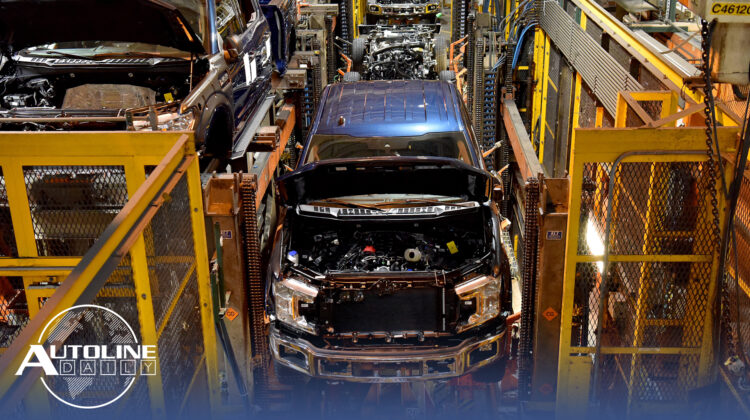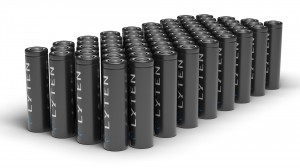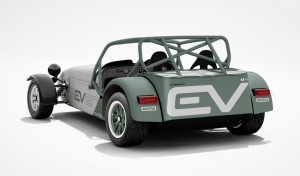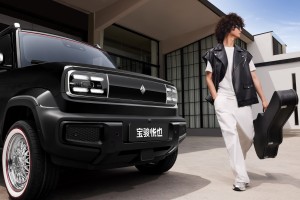
Listen to “AD #3575 – Sulfur Batteries the Next Big Thing?; 2024 F-150 Has 2,500 Fewer Parts; Great Wall and BYD Fight in Public” on Spreaker.
Follow us on social media:
Runtime: 9:54
0:00 Is This the Battery Breakthrough We’ve Been Waiting For?
1:31 California Sets the Stage to Ban ICEs in 2035
2:41 Great Wall Accuses BYD of Exceeding Emissions
3:43 2024 F-150 Has 2,500 Fewer Parts
5:22 Iconic Caterham Going Electric
6:35 Lordstown’s Hail-Mary Stock Split
7:28 Yep, We Sure Do Like That Car
Visit our sponsors to thank them for their support of Autoline Daily: Bridgestone, Intrepid Control Systems, and Schaeffler.
This is Autoline Daily, the show dedicated to enthusiasts of the global automotive industry.
IS THIS THE BATTERY BREAKTHROUGH WE’VE BEEN WAITING FOR?
Lyten, a Silicon Valley startup that is developing lithium sulfur batteries, scored a big win. Stellantis is investing in the company and wants to start using its batteries in the second half of this decade. Lithium sulfur could be that battery breakthrough that everyone has been hoping for. Lyten says it has twice the energy density of lithium ion batteries. It has a 60% lower carbon footprint and it doesn’t use any nickel, manganese or cobalt. Sulfur is a waste product from manufacturing processes such as petroleum refining and food and paper production, so it’s cheap and plentiful. Today, it’s largely dumped in landfills. Sulfur batteries are not a new idea, but they don’t last very long. Lyten’s breakthrough idea is to use graphene to get the longevity it needs. But neither Lyten nor Stellantis will say what kind of life cycle they’re getting out of the batteries at this stage of development. Another issue could be recycling. Since sulfur is so cheap and plentiful, there isn’t much value in recycling it. Even so, these batteries could be made in existing battery plants with only 10-15% changes on the line.
CALIFORNIA SETS THE STAGE TO BAN ICE IN 2035
The battle over stricter vehicle emissions in the US is getting more intense. Earlier this week, Republicans in the U.S. House of Representatives urged the EPA to roll back stricter vehicle emission rules that go into effect in 2027. On the other side of the fight, California wants the EPA to approve its proposal to ban sales of new ICE-only powered vehicles in 2035. It wants the EPA to approve a waiver so it can enact emission rules that get tighter every year starting in 2026. That year 35% of new car sales must be PHEVs, BEVs or hydrogen powered cars. It jumps to 68% in 2030 and in 2035 all new vehicle sales must be zero-emission. California says the rules will cost more than $200 billion but result in $300 billion in total benefits. And seven other states have already adopted Califoronia’s EV rules.
GREAT WALL ACCUSES BYD OF EXCEEDING EMISSIONS
China’s auto industry is brutally competitive, and now Great Wall Motor is publicly attacking BYD, saying its best selling PHEVs don’t meet emission standards. We’ve never seen anything like this in the industry before. Usually, when one automaker thinks another isn’t meeting regulated standards, it quietly approaches the regulatory agency through backdoor channels. But Great Wall is doing this out in public and BYD says it could end up suing Great Wall. It’s all about evaporative emissions. Great Wall says BYD does not use pressurized gas tanks in its PHEVs, which means it has higher evaporative emissions. BYD says it welcomes an official review of the Qin, which is its best selling sedan, and the Song, which is its best selling SUV. Both companies saw their stock prices take a hit on the news.
2024 F-150 HAS 2,500 FEWER PARTS
Ford says it has a $7 billion cost gap versus its competitors and is searching for all kinds of ways to cut costs as fast as possible. One way is reducing product complexity. For example, the Explorer now has 1,900 different build combinations. That will be slashed to only 23. The Expedition has 800 build combinations that will get cut to only 32. Once that’s done it will free up 85,000 square feet of assembly plant floor space, which will allow more work to be in-sourced. The 500 different wiring harnesses the company uses across its entire lineup will get cut to only 14. That alone will save half a billion dollars a year. Kumar Gaholtra, the head of Ford Blue, says when the new F-150 comes out later this year it will have 2,500 fewer parts than the outgoing model, simply through better design.
ICONIC CATERHAM GOES ELECTRIC
Caterham, which is known for its lightweight, open-top touring cars, is dipping its toes into EV waters. It’s showing off a prototype EV Seven that it will use as a development concept. It features a 240 horsepower eAxle supplied by a company called Swindon Powertrain and a battery pack with 40 kWh of usable space. That setup is about 70 kilograms or 154 pounds, but it provides a 0-60 time of 4-seconds, which is about the same as the ICE version. The company doesn’t give a range estimate, but said the car should be able to drive on track for 20 minutes, charge for 15 minutes and then be able to drive another 20 minutes. To be able to handle that kind of cycle it uses an immersion-cooled pack that’s capable of charging speeds of 152 kW. And it’s not stopping with one EV, Caterham will show another fully electric sports car concept in “the coming months.”
LORDSTOWN’S HAIL-MARY STOCK SPLIT
Lordstown Motors wants to kill two birds with one stone. It’s doing a reverse stock split. For every 15 shares of its stock you own, now you get one. That will boost the price of each share to more than a dollar. The EV startup was threatened to get delisted on the Nasdaq exchange because its shares fell below the minimum $1 requirement. If it got delisted, Foxconn, which builds Lordstown’s trucks, said Lordstown would breach its $170 million investment deal. And if Foxconn didn’t fulfill the rest of the deal, Lordstown would have to file for bankruptcy. Maybe the stock split will save the deal, but Foxconn hasn’t commented on whether or not it’s satisfied.
YEP, WE SURE DO LIKE THAT CAR
Baojun, which is part of the GM-SAIC-Wuling joint venture, is launching an updated logo in China and will first be featured on the all-electric Yep, which just went on sale. That’s its boxy, little baby SUV that ranges in price from a little over $11,000 to almost $13,000. The car even comes with a screen on the back tailgate that can display messages and it looks like you can get upgraded versions with unique wheels and white-wall tires. Yes, white walls! But does anyone else think those look like Chrysler wheels from the 90’s or is that just me?
SUPPLIERS FACE EV DARWINISM
The EV revolution isn’t just a threat to legacy automakers. Suppliers face an uphill battle, too. Automakers want to become more vertically integrated and bring more work in-house. And they want to do most of the coding for their software defined vehicles. That could shut suppliers out of a lot of future business. So what kind of strategy will suppliers need to develop going forward? That’s going to be the topic on Autoline After Hours later today. Michael Robinet from S&P Global Mobility, and Keith Naughton from Bloomberg will be on the show. So we invite you to join John and Gary when the show goes live at 3 pm eastern time.
And that’s the end of today’s show. Thanks for tuning in.
Thanks to our partner for embedding Autoline Daily on its website: WardsAuto.com
Seamus and Sean McElroy cover the latest news in the automotive industry for Autoline Daily.









